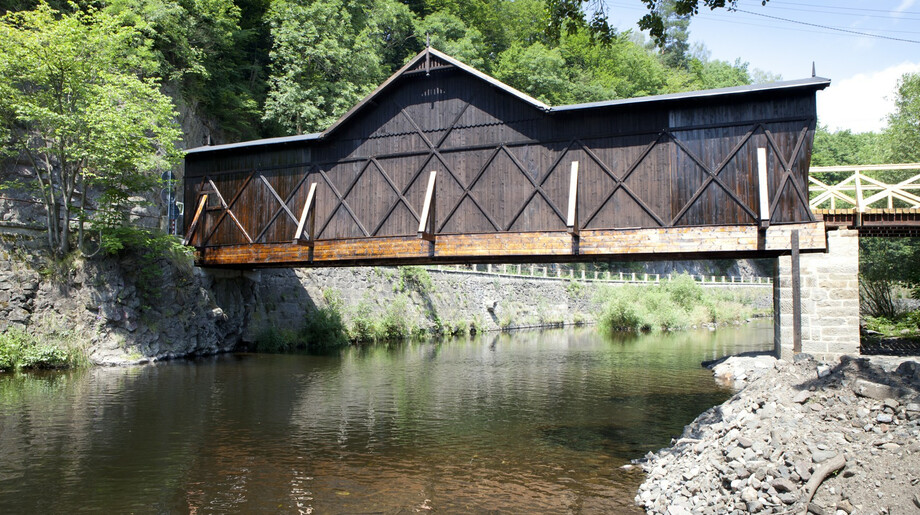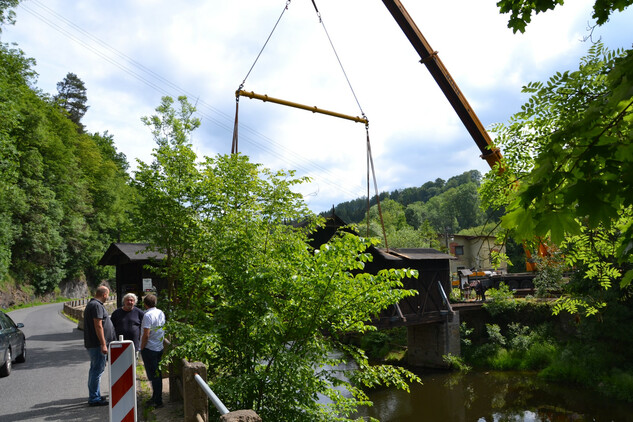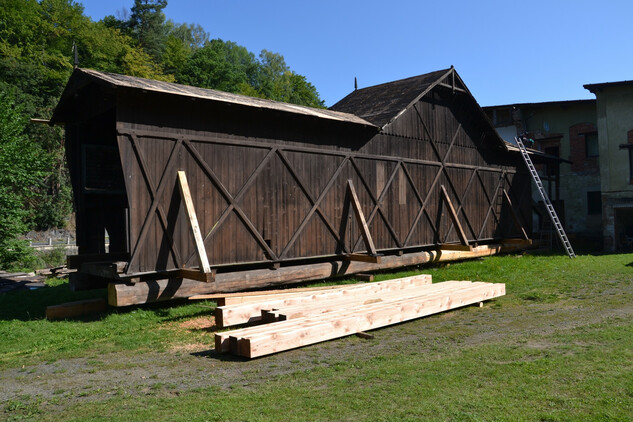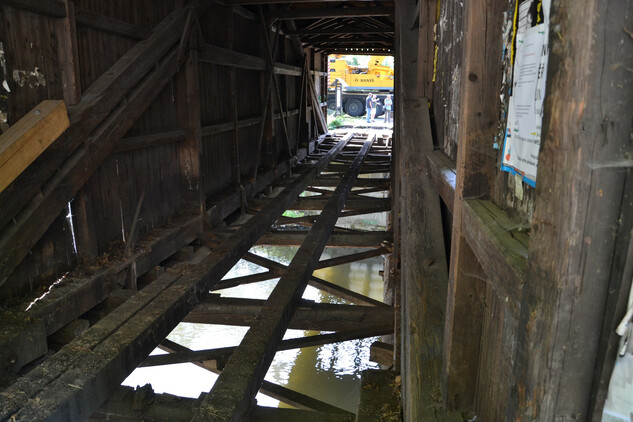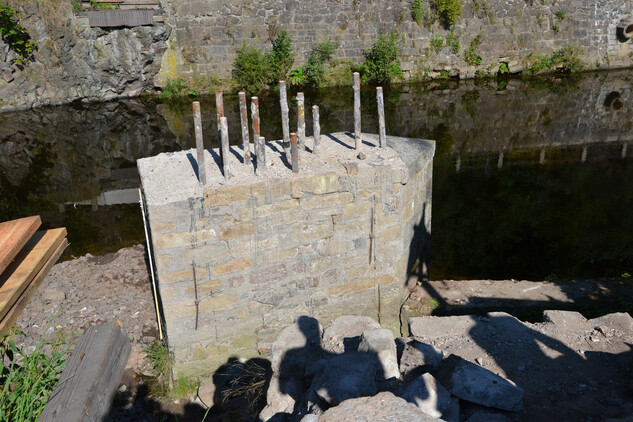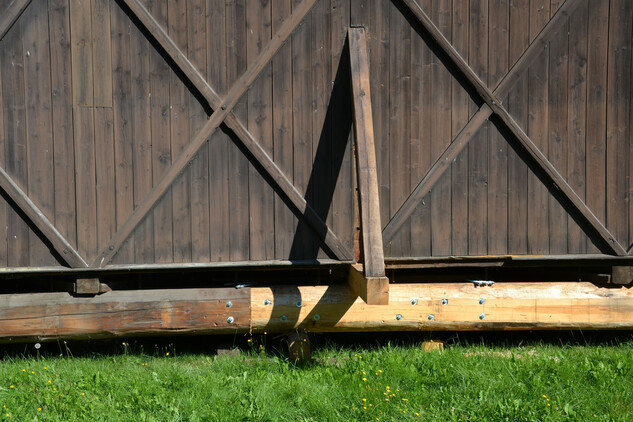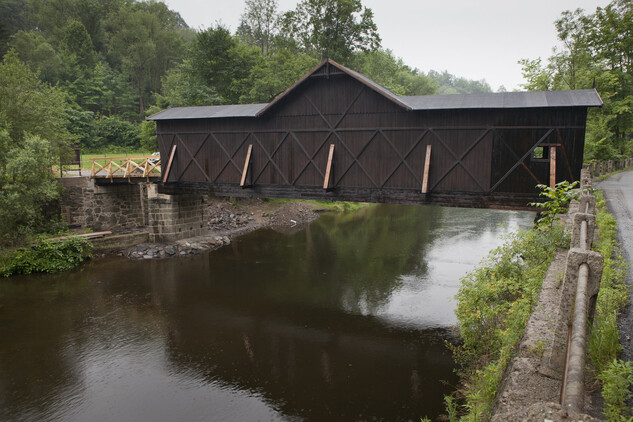The main part of the bridge consists of a wooden structure, covered by two interconnected gabled roofs. The bridge floor is made of loose wooden slabs. The pentagonal bridge pillar in the riverbed was built using sandstone slabs, with decorative grooves. In the brickwork, a block is set with a carved initials and date „F + J/1888“. The essential element of the bearing structure is the couple of tree trunks, with rough carpenter adjustments, built in the 1880s; until 1920, these trunks supported the uncovered bridge floor. After 1920, the whole structure was slabbed and roofed.
Without any limits, the bridge was used as a connection between the road No. 292 and the village of Bystrá nad Jizerou. The building and numerous insensitive adjustments of the “Jizera Road”, together with the use of road salt and climatic influences, caused the rotting of the main beams to the extent that the bridge had to be closed in 2013. It seriously complicated the traffic accessibility of Bystrá.
Repeated negotiation with the bridge owner, i.e. the municipality of Bystrá nad Jizerou, did not reach any conclusion as the small village with the population of 116 people could not gather the necessary funds, nor did it employ personnel needed for the administration of the process. Other factors that made the project difficult included the overall (mis)understanding of the problem, coordination of many complex and sometimes contradictory interests (water management, environment, traffic, heritage conservation), or different views regarding the conditions of the bridge and possible reconstruction. It only changed when the Liberecký Region entered the process as the guarantor. With this institution on its side, the municipality of Bystrá started preparatory works that resulted in the project documentation and building permit.
The reconstruction was eventually much easier thanks to a brilliant idea of Ing. Svoboda, bridge specialist from the neighboring village: to transport the bridge, as a whole, by a huge crane to a dry place outside the riverbed. Then, the authorities of Liberecký Region allocated the one-off direct support of 3.85 million for the project, and offered to acquire the bridge later (as it would need more funding and increased care even when the reconstruction is done). The reconstruction of the bridge was also co-funded by the Ministry of Culture, from the Rescue Program for Architectural Heritage.
The representatives of the Liberecký Region attended the supervision days, and they coordinated everything so the final permit could be issued in July 2017; the bridge was ceremonially opened, and the traffic restored. Currently, the bridge is once again used by public, not only by a remarkable proof of technical abilities of our ancestors but also as an important traffic connection for the secluded village of Bystrá nad Jizerou.
Nominated for the Liberecký Region by the regional center of the National Heritage Institute in Liberec.
The Regional Authority of the Liberecký Region, represented by René Brož, Head of the Department of Culture, Heritage Care and Tourism, was nominated for the National Heritage Institute Prize, category: Rescue of a Heritage Site.
